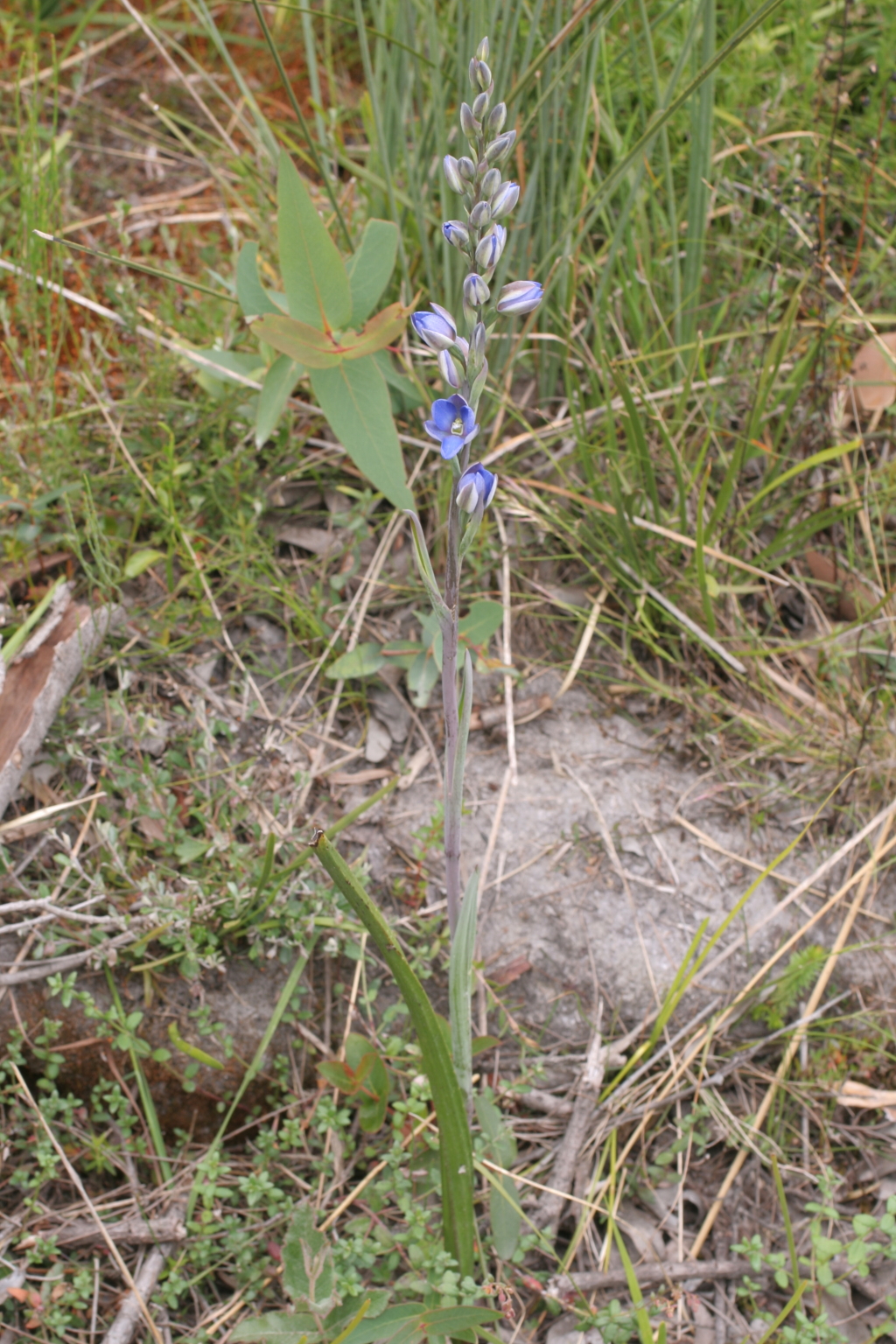Thelymitra media
R.Br. Tall Sun-orchidFlowering stem erect, slender to stout, straight, 20–100 cm long, 2–7 mm diam., green to purplish. Leaf linear to lanceolate, attenuate, 10–40 cm long, 3–20 mm wide, thick, fleshy, canaliculate to conduplicate, ribbed abaxially, sheathing at base, dark green with a purplish base. Inflorescence 2–30-flowered. Sterile bracts 1–3. Flowers sweet-scented, pale to dark blue, rarely pink or white; perianth segments ovate to lanceolate, 10–22 mm long, sepals firmer than petals. Column cylindric to quadrangular, 4–7 mm long, white to pale blue; mid-lobe slightly hooding, 0.5–1 mm long, 1–2 mm wide, yellow with a black subapical collar, apex with 1–several rows of rounded calli, sometimes irregularly toothed; auxiliary lobes 0.6–1 mm long, converging, more or less rectangular to quadrate, fleshy, porrect or obliquely erect, apex toothed or warty, yellow; lateral lobes 1.5–2.5 mm long, oblong, porrect or obliquely erect, apical margins with a toothbrush-like arrangement of white hairs. Anther inserted near middle of column, with a slender incurved beak protruding below the lateral lobes. Flowers Oct.–Jan.
GipP, OtP, Gold, CVU, EGL, EGU, WPro, HSF, HNF, Strz, MonT, HFE, VAlp. Also Qld, NSW. Grows in sub-alpine woodland, wet sclerophyll forest and open forest, often on rich mountain loams or occasionally on poorer clay loams.
Although the flowers of Thelymitra media are superficially similar to those of T. ixioides, the former is usually a far more robust plant and has unspotted flowers.
Thelymitra media has been confused with T. improcera and T. longiloba, but can be distinguished by its generally later flowering period, more robust nature, larger flowers and usually longer lateral lobes on the column.
Weber, J.Z.; Entwisle, T.J. (1994). Thelymitra. In: Walsh, N.G.; Entwisle, T.J., Flora of Victoria Vol. 2, Ferns and Allied Plants, Conifers and Monocotyledons, pp. 840–854. Inkata Press, Melbourne.
 Spinning
Spinning

